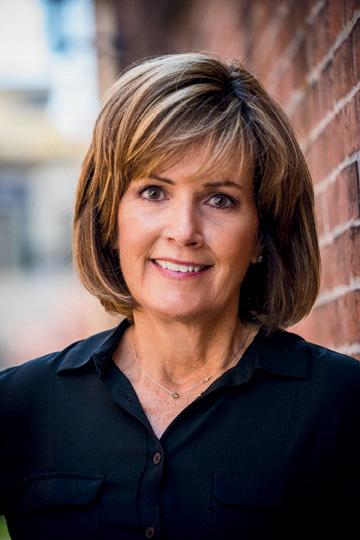
STRATEGIES FOR LIFE, LOVE & FINANCES OF DEFYING EXPECTATIONS BY TURNING FEAR INTO SUCCESS THIS MONTH:


STRATEGIES FOR LIFE, LOVE & FINANCES OF DEFYING EXPECTATIONS BY TURNING FEAR INTO SUCCESS THIS MONTH:

SOUTH DARTMOUTH $1,495,000

This newly constructed, luxury home is nestled down a professionally landscaped, private drive just minutes away from local beaches and Padanaram Village/Harbor and offers four bedrooms, 3.5 baths with top-of-the-line appointments throughout. Contact Gillian Barnard 617. 799.3917 or Sarah Korolnek 774.644.9156.

HILL EXCLUSIVE OFFERINGS
SEASIDE EAST $2,495,000
SOUTH DARTMOUTH $2,650,000

LITTLE RIVER FARM - This extraordinary 22-acre estate-like property is bounded by stone walls and offers a nearly 3,000 sq. ft. shingled home with pastoral views from 'most every room. A spectacular three-story barn offers versatile space for farm equipment, car collectors, workshop . . . Contact Will Milbury at 508.525.5200.

Rarely available! Direct waterfront, threebedroom, two-bath home with private pathway to white, sandy beach Contact Will Milbury 508 525 5200 or Sarah Meehan 508 685 8926
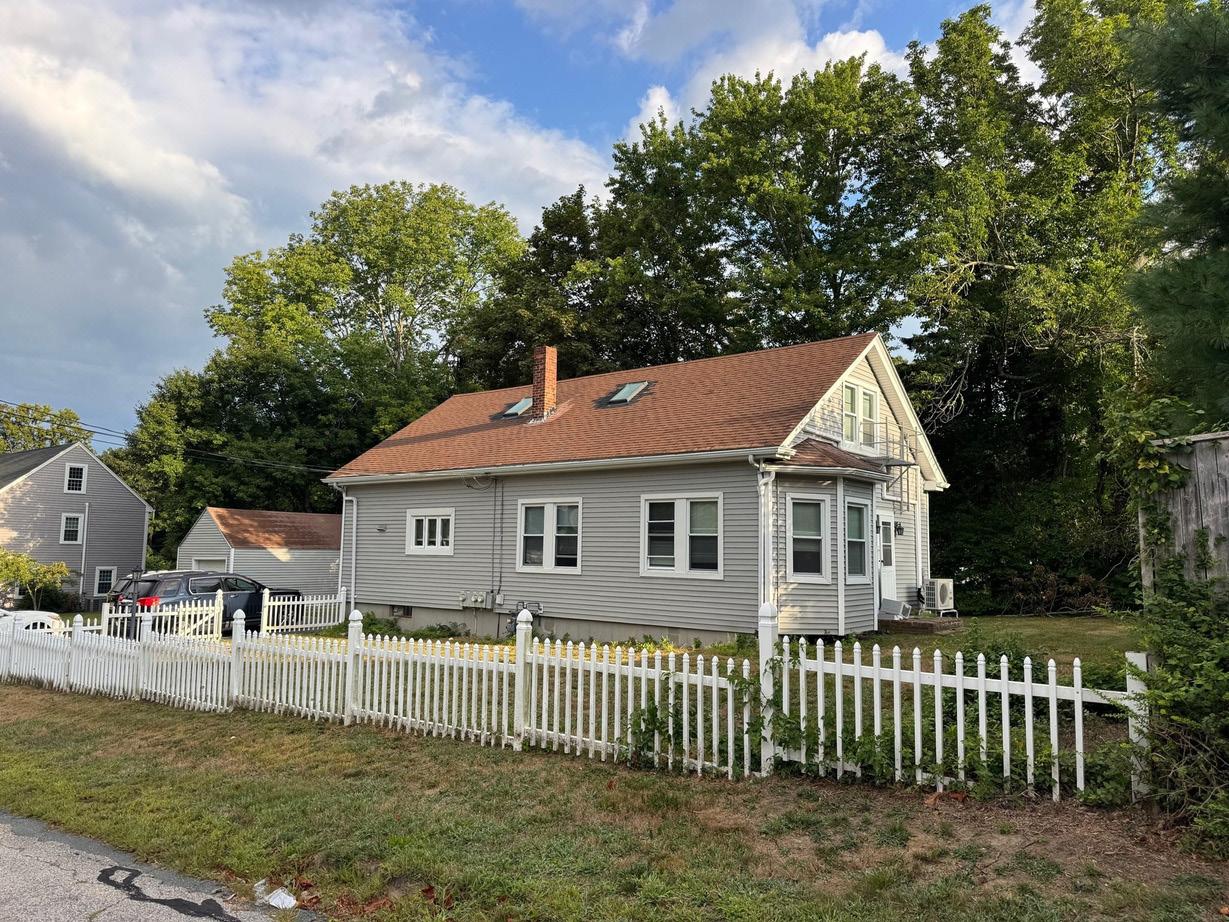
DARTMOUTH $535,0000
This property offers easy access to highways and schools. Two-family home, which could be used as a single family dwelling, is tucked away on a tree-lined street with a one car garage. Contact Nina Weeks 617. 957.8769

ROUND HILL Community Amenities include tennis courts, nine-hole golf course, an Olympic-sized swimming pool, seasonal snack bar and a beautiful sandy beach!
GREEN $1,999,000
Colonial with grand foyer and soaring cathedral ceilings, 4,894 s.f. with hardwood floors throughout and


SOUTH DARTMOUTH $799,000
SOUTH DARTMOUTH $2,395,000
Sensational contemporary Colonial on nearly an acre in the heart of Padanaram Village! A blend of formal and informal spaces with park-like gardens, set just a stone’s throw from the Village! Contact Will Milbury at 508.525.5200. SOLD






SOUTH DARTMOUTH $1,995,000 Set on a picturesque half-acre lot, this rare offering boasts breathtaking water views from nearly every room, a private beach, deeded rights to Stoneledge Beach and a stone peninsula. Contact Gillian Barnard 617.799.3917




TIVERTON $1,075,000 Fogland Point! With breathtaking views of the Sakonnet and Aquidneck Island, this charming summer cottage is set on high and is comprised of two lots, totaling nearly three-quarters of an acre. Contact Kevin Quinn at 774.319.3401.

























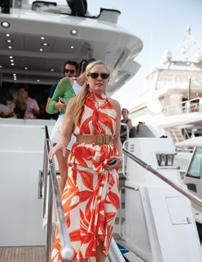




Some might question the accuracy of our headline, and for a moment, they may have a drizzle of truth in their critique. Our title, Fear Is Inaction and Never a Solution, could be challenged if our premise were limited to describing the acute ignition of the ‘fight or flight’ survival response—an instinctive reaction of the sympathetic nervous system to an immediate threat or danger. However, our focus is not the acute but the chronic—the ongoing, low-grade stress that sidelines people from engaging in solutions to the social, cultural, and personal challenges that define our times. This kind of persistent stress leads to learned helplessness—a paradox between the desire for calm and civility and the struggle of feeling out of control.
DURING TOUGH TIMES
what evokes fear until the mind learns a calmer response. It also involves maintaining self-control over your thoughts and physical environment by understanding the differences between perception and perspective, a critical interpretation we often cite in our features when addressing psychological growth and well-being.
Each time we face what unsettles us—whether that’s a difficult conversation, a bold career shift, a new stage of life, or the simple act of showing up as who we are—we reclaim a measure of freedom; a freedom from the tyranny of self-doubt and freedom from the invisible walls that fence in creativity and aspiration. Fear faced is not just diminished; it becomes transformed into competence, confidence, and ultimately, opportunity.
Compounded daily, the rumination of negative thoughts and imagery—reinforced by media narratives suggesting that those charged with maintaining peace and order are themselves losing control—inevitably breeds fear and resentment. Over time, chronic stress and fear manifest as both cognitive and physical ailments: elevated blood pressure, cardiovascular disease, weakened immunity, mood and adjustment disorders, digestive issues, insomnia, and impaired concentration and memory. In severe cases, prolonged fear and stress may even contribute to PostTraumatic Stress Disorder (PTSD).
But fear is not confined to one age or circumstance. Its form changes. For the young, fear often appears as social pressure— the anxiety of not belonging, of being left out, or of failing in comparison to others. For adults, it emerges in decisions about career, relationships, finances, and health. For leaders, it shows up in the burden of responsibility and the uncertainty of outcomes that affect others. Across generations, the root remains the same: fear of the unknown, the possibility of losing control, or stepping into a space where results cannot be guaranteed.
Current behavioral and cognitive research increasingly supports what many seasoned leaders and thinkers have long recognized: fear, when faced directly, loses much of its grip. Avoidance amplifies anxiety; exposure reduces it. Modern psychology calls this exposure theory—the process of gradually engaging with
The paradox alluded to earlier can be resolved through insight into the relationship of emotional responses.
Security, which most people seek by avoiding risk, is best achieved by learning to manage uncertainty.
True stability doesn’t come from becoming insulated, but from adaptation. Those who practice courageous engagement—leaders, parents, students, and citizens alike—are not fearless. They fear less because they’ve proven to themselves, they can survive and learn from uncertainty.
Nowhere is the struggle with fear and insecurity more visible than among today’s youth. Social media, peer ranking, and a culture of constant comparison have made external validation a kind of social currency. Young people often equate approval with worth, mistaking digital applause (or likes) for genuine belonging. The fear of exclusion or criticism drives them to conform to curated versions of themselves rather than being true to themselves.
If left unexamined, or worse, misunderstood, this cycle follows people into adulthood. The need for approval can lead to fear of rejection at work, an avoidance of taking creative risks, or a failure to embark on a path of leadership. Many professionals find themselves caught between ambition and anxiety, unable to take decisive steps because the possibility of disapproval looms larger than the promise of success.
Fear faced is not just diminished; it becomes transformed into competence, confidence, and ultimately, opportunity
This pattern often leads to stagnation. The young adult who once feared a low level of ‘likes’ becomes the executive who avoids any form of public failure. It stems from uncertainty and the need for control over what they cannot manage.
Authentic validation must come from within. Confidence built on self-awareness and competence, rather than on approval, creates lasting emotional stability. Encouraging people of all ages to experiment, to fail safely, and to derive pride from effort rather than outcome is one of the most potent antidotes to fear-based living.
Breaking free from fear requires deliberate practice. The most effective strategies may seem counterintuitive or even risky, yet they yield long-term security and fulfillment.
› Redefine Failure
Failure is not a verdict—it’s feedback. Each setback reveals what doesn’t work, narrowing the path to what does. Those who view failure as part of progress cultivate resilience and learn it transcends age and circumstances.
› Make Micro-Decisions that Stretch Comfort Zones
Fear thrives in avoidance. Taking small, calculated risks— such as speaking up in a meeting, trying a new skill, or initiating a difficult conversation—builds the muscle of courage incrementally.
› Anchor to Purpose, Not Approval
A clear sense of mission overrides the temptation to seek validation. When choices are made in service of purpose rather than popularity, fear loses its foothold.
› Embrace Uncertainty as a Teacher
Unpredictability is the default state of growth. Those who learn to interpret uncertainty as opportunity—whether they are students or executives—discover a steadier sense of control.
› Invest in Emotional Fitness
Just as physical exercise strengthens the body, mindfulness, reflection, and connection strengthen emotional endurance. Learning to pause before reacting transforms fear into clarity and intention.
Fear, left unchecked, turns individuals into spectators in their own lives. It erodes creativity, stifles leadership, and limits collective progress. But when faced with awareness and intention, fear becomes a guide—a signal pointing toward the very areas where growth awaits.
Across all ages, the message holds: progress depends not on eliminating fear but on mastering it. The courage to act, especially when certainty is absent, is the defining mark of maturity, leadership, and wisdom.
The lesson is simple: Freedom is not found in safety but in strength. Those who confront what they fear—whether it’s the unknowns of youth, the demands of adulthood, or the weight of leadership, are the ones who discover both peace and purpose.
As for the others who conform, their fear will continuously whisper that inaction is safe even though their experiences prove otherwise. H
“The Only Thing We Have to Fear is Fear Itself.”
These legendary words of Franklin D. Roosevelt during his 1933 Inaugural Address have been diluted over generations. Their replacement is driven by the pursuit of ‘safe spaces’ and a change in the vernacular to avoid offending, or worse, to subjugate one’s value and self-esteem in place of approval and validation. It’s time to stop the madness; we have some ideas on how to succeed.
Fall Has Arrived. And with it come renewed insights and fond memories. For November, we take a closer look at ourselves through the joy and laughter of children and leaf piles.


A Housing Crisis Years in the Making. Isn’t it the truth? It seems everyone is staying put, yet some homeowners are deciding to make a move by adding a building or expanding their homes to profit from the new rage focused on Accessory Dwelling Units, or ADUs for short. You know, the in-law apartment, a carriage house secretly rented without anyone noticing, or the space over the garage your kids called home until they left. Well, now, you’ll be on the side of the law and able to go public with your plan. But, beware of the idiosyncrasies involved in designing and constructing one for the first time—there’s a lot to learn ahead of time.
A Model Citizen. This month’s pick is cheerful, mindful, and a delight to be around. She is multidimensional and a perfect example of how to become motivated and reach personal success. You’re going to like this feature.


How Are You Aging? It’s a question that many of us should ask since the day we came into the world, we grew and continue to get older. With the media’s attention focused on youth and longevity, we decided to check in with the experts to decipher the discrepancy in how the brain and body are not joined as we age. Usually, you only have one that stays operational, and you don’t get to choose, or do you?

Personalized Medical Care. It’s no longer a myth, but it does, like everything else, cost more. The growth of an industry that some hate because they believe medicine should be equalized isn’t showing signs of succumbing to cultural flogging; instead, it’s growing by leaps and bounds. With the rising costs of commercial insurance, denials, and a lack of time and attention to patients, the future for those seeking more value for their money focuses on ‘Concierge Medicine.’ We explain how it works.
Neuro-Dating. Is it a fad or a viable option for finding lasting love in a swamp of fractured relationships? We explore the theory and practices of how to understand and construct a ‘blueprint’ for love. Some consider it a secret potion, while others claim it’s exhausting. We’ll let you decide if it’s worth the emotional investment.
How Not to Get Rich! Everyone knows a few friends, family members, or acquaintances who, regardless of the advice you share about financial planning, dismiss your wellintentioned concerns, offering lame excuses like “I live in the moment” or “I have plenty of time.” It’s because we’ve all faced this error in judgment that we decided to get their attention by giving them precise instructions with illustrations, providing many more methods to remain on a track to poverty. It seems that sometimes you need to do the opposite to get the proper reaction.


Levenger. Gifts that transcend time and technology. The best in every category, as you well know, can be found on our pages as we approach the holidays. Once again, we invited a nationally recognized company to engage our discerning readers with elements and tools that enhance the everyday rituals of reading, writing, and organizing. They value the written word and the art of thoughtful living, and their gifts to others show that commitment.
It’s Back! The most admired and anticipated Providencebased Foundry Art Show & Sale is back for its 2025 Holiday reveal. It’s time to fill in your calendars and plan to get amazing works from juried artists, available only once a year, in the evening. Interesting, it sounds remarkably similar to someone else with that schedule; could there be a connection? Just an observation.


Good Business. It entails committing to individuals, organizations, and communities so that, as a collective, all will thrive. Learn who is stepping up as the holidays get underway.

Before anyone jumps to conclusions, please calm down and accept that this advertisement is meant to challenge the ordinary, stimulate critical thinking, and give you good reason to place your company on our pages.
Some might be familiar with Bud Light, which used Dylan Mulvaney to promote its product. An absolute failure, the creatives were clueless as to who their clientele was; its parent company, Anheuser-Busch, lost about $1 billion in revenue. It was a grave mistake that still stings.
Conversely, American Eagle put Sydney Sweeney in jeans and innocently played a game of word tag. And even though there was backlash from those who disparaged the campaign, their
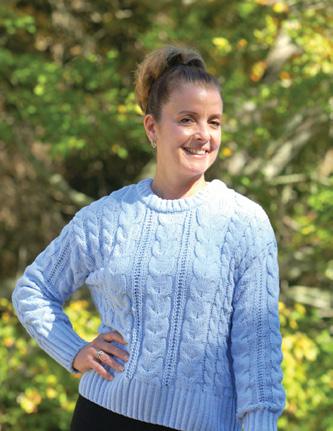


efforts backfired, and the company’s stock soared by around 40 percent. The noise created turned the campaign into a public relations success.
What do we have to say? We know who we are, we understand our clients, and we have consistently reached millions of readers by publishing every month for over 20 years.
Join us this holiday season and discover why we have outlasted the competition, attracted the best based on a proven track record of success (rather than biased voting), and created a brand so strong that some are naming their business after it.
Let’s talk at nemedia@earthlink.net or 508-971-1969.




Fine art, furnishings, collectibles, and accessories for interior design projects, home-sale staging, studio photography, and theatre events— for purchase or lease. Flexible terms available.


BY PEET NOURJIAN

ONCE AUTUMN COLORS LOSE THEIR HUE THERE’S LITTLE THAT THE LEAVES CAN DO BUT SHRIVEL UP AND START TO FALL BROWN SAILS INSIDE NOVEMBER’S SQUALL
IN NO TIME THEY ACCUMULATE DRIFTING AT AN INCREASING RATE UNDULATING ACROSS THE GROUND WHISTLING WIND THE ONLY SOUND
SMALL SWEATER’D FIGURES MAKING HASTE TRUDGE THROUGH DRY LEAVES UP TO THEIR WAIST ARMS STRETCHED TOILING TIRELESSLY BUILDING A PILE BENEATH A TREE
ON THE LOWEST LIMB ARE FACES EAGER, LAUGHING, RED CHEEKS, BRACES ONE BY ONE EACH PARATROOPER FREE FALLS IN A CHILDHOOD STUPOR
WITH RAKE IN HAND THIS GROWNUP MIND RECALLS A SOUND LONG LEFT BEHIND FREE FALLING IN MY PILE I HEAR DRY LEAVES WHISPERING IN MY EAR. H

MATTAPOISETT $2,250,000
Set just outside of Mattapoisett Village, this magnificent coastal retreat offers deeded beach rights and sweeping views of the harbor and Molly’s Cove from nearly every vantage point.

POCASSET $6,295,000
Exceptional waterfront estate featuring a fivebedroom residence with a swimming pool on 2.5 acres overlooking Buzzards Bay.

MARION $3,600,000
Stunning 5-bedroom contemporary on 4.5 acres with scenic views of Planting Island Cove. Dock access to Sippican Harbor.

FALMOUTH $5,295,000
Situated on 1+ acres, this waterfront contemporary offers sweeping views of Buzzards Bay and direct access to the shoreline.

TRURO $2,695,000
5.38-acre lot crowns one of Truro’s highest points, offering sweeping vistas, water views, natural beauty, and exceptional privacy.

PROVINCETOWN $4,500,000
East End Provincetown estate combines architectural character with a rare sense of scale and privacy.

WESTPORT $1,250,000
Stunning custom four bedroom Craftsman home in Forest Park. Elegant one-level living plus a versatile bonus room.
EXCLUSIVELY LISTED AT $4,500,000

Welcome to Marion’s Converse Point, an exclusive waterfront enclave on Buzzards Bay. Set on 2.76 acres, this 5,030 sq. ft. residence offers breathtaking views of Buzzards Bay and effortless coastal living. Built in 2012, this home features 5 bedrooms, 4.5 baths, an elevator, and multiple decks showcasing the sweeping views. The chef’s kitchen features premium appliances and custom cabinetry, flowing to sunlit living spaces ideal for entertaining. Enjoy a heated swimming pool, hot tub, and pool cabana.
Custom-designed and built estate set on a 10+ acre estate in the secluded Hammett’s Cove neighborhood in East Marion. This property offers an unparalleled blend of elegance, privacy, and coastal charm. Complete with a 4,000 +/- sq. ft. main home, 3-car garage, gunite pool, pool house, putting green, and access to the association beach and dock, offering easy access to Sippican Harbor!

EXCLUSIVELY LISTED AT $4,950,000

EXCLUSIVELY LISTED AT $399,000
Step inside this classic 1961 Royal Barry Wills-designed Cape Cod-style home located in the heart of Marion Village! Set on a private .52 acre lot, this 2,400 +/- sq. ft. home offers 3 bedrooms, 3 full baths, a formal living room with Rumford fireplace and built-ins, dining area, cozy den, and a kitchen with updated appliances. Walk to the town center, Silvershell Beach, and schools in just minutes from this central location.
Welcome to Marion, the hidden gem of the Southcoast! This large and incredibly private East Marion property could be the site of your dream home(s)! With 17+ acres, the opportunities are endless. This property is located outside of the flood zone and has access to town water and sewer at the buyer’s expense. Don’t miss this incredible opportunity!

SOLD FOR $1,275,000
BY ROBERT WRIGHT
In real estate, shortcuts almost always show, and nowhere is this truer than in the rapidly growing world of Accessory Dwelling Units (ADUs). Once seen as hidden backyard cottages or lackluster in-law apartments, today’s ADUs are regarded as prime rental opportunities that provide both a flow of income and property appreciation over time. But the difference between a property that commands top-tier rents and one that languishes in the listings often comes down to execution. Suddenly, we’re witnessing a competitive market driven by quality, design, and curb appeal; these are not luxuries but essential factors when deciding on placement, amenities, and functions that improve a renter’s quality of life.
Modern renters, especially younger generations, no longer see housing as a simple matter of shelter. They expect spaces to reflect identity, support daily convenience, and enhance lifestyle. Through thoughtful design with cohesive interiors and refined finishes, convenience-driven amenities such as secure parking, in-unit laundry, and
digital entry, the total package of lifestyle integration is an essential component for the ambitious effort of adding to your residential property footprint.
With this perspective, the process is reshaped and the calculus for any homeowner considering an ADU results in a decision; invest in a cheaply executed project that may save money in the short term, or take a leap and spend a bit more to ensure your space gets scooped up in a world where supply is growing and renters will soon have a plethora of choices. It’s expected that with such a revolutionary approach to providing much-needed housing, the market (potential renters) will gravitate toward properties that match their aspirations.
Consider this up front—today’s tenants are not simply renting a unit; they’re curating an experience.
…today’s tenants are not simply renting a unit; they’re curating an experience


By definition, ADUs are fully independent secondary homes built on a single-family lot. While the term is universal, the designs are not. ADUs come in many forms—detached cottages, basement apartments, garage conversions—but all share one vital element: independence. Without a kitchen, it’s not an ADU; it’s an annex.
Detached new construction – backyard cottages, laneway houses, or standalone guest homes.
Garage conversions – transforming underused space into high-demand living quarters.
Above-garage units – carriage houses that preserve lot space while creating privacy.
Bump-out additions – extensions of the main home with shared walls and utilities.
Basement apartments – modernized subterranean suites.
Internal conversions – reconfigured spaces within the primary residence.

However, before you can start, it’s vital to understand that beyond the thrill of enhancing your property, not everyone is on board with their once private neighborhood becoming a busy, sometimes noisy nuisance that they didn’t bargain for when they moved in next to you. Some factors creating tension between primary homeowners include the placement of new units and their design into existing homes’ properties, which are too often squeezed into tiny plots that block views, cast shadows, or remove privacy from a property line.
Other complaints are that the ADUs bring in non-traditional renters, which could affect property values. No doubt in the tony coastal communities of the northeast, for decades,

small intimate rentals quietly existed, and because they weren’t considered a Main Street commodity, infrequently advertised publicly, most were learned of by private conversations or invitation that allowed for discretion as to whether a tenant, owner, and community were aligned.
The temptation to cut corners is understandable, particularly with construction costs rising steadily. Yet this is where serious investors distinguish themselves. The most expensive mistake in an ADU project is building a unit that no one wants to rent.
Issues that can come back to haunt a motivated personal-property developer include: inferior finishes leading to faster wear and expensive repairs; a lack of cohesion between the primary and secondary homes, signaling indifference and deterring design…false savings in process and construction often result in a significant loss of rent revenue
conscious renters; and the challenge of working around permitting, with the risk of fines, legal interference, and diminished resale value. Overall, false savings in process and construction often result in a significant loss of rent revenue.
To attract premium tenants, expect to bait them with premium details and modern touches—a well-fitted kitchen, spacious bathroom, ambient lighting, and matte finishes can create the difference between average and aspirational living. Those who view an ADU as a long-term investment, rather than a budget project, position themselves for sustainable returns and premier guest renters.
While steady rental income is the immediate appeal, ADUs also provide longterm advantages that extend well beyond the lease agreement. As property values increase, having a legal, well-designed ADU as part of the offering brings a host of benefits in sync.
This new flexibility of having two homes side-by-side allows owners to adapt, whether for housing family, creating a studio, or
…an ADU becomes a strategic asset, not just a rental sideline
eventually downsizing into the ADU themselves and renting or selling the primary home in the future.
It’s commonly known that market resilience ensures that even as tastes change, quality construction and timeless design keep a well-built ADU competitive. Classic design with contemporary form and function needs little updating as the years pass; the concern is whether it will be done correctly the first time or if it will need to be repeated a few years down the road.
In this sense, an ADU becomes a strategic asset, not just a rental sideline. It enhances the property, supports multi-generational living, and offers the owner options that extend decades into the future.
Accessory Dwelling Units are reshaping modern housing, but, as noted, not all units are created equal. The winners in this market will be those who build with purpose— investing in design, aligning their projects with the expectations of today’s sophisticated renters, and keeping an eye on the future.
For the forward-thinking homeowner, an ADU is more than additional square footage. It is a chance to create distinction: a property that fits into the community rather than stands out, generates positive cash flow, and ultimately appreciates along with your current home. H



BY STEVEN CHAN
The current echo of boisterous whining and finger-pointing from those drowning in self-pity because of an imagined loss of opportunity— and their pitiful resentment toward anyone who has ‘made it’—is hard to miss. This self-imposed myopia blinds many from reality. Here’s
the truth: you are your problem. Your struggles are not greater than those of your relatives who survived the Great Depression. The ‘harm’ you claim words inflict is why the term snowflake fits so neatly across a generation of the entitled. And when it comes to hardship, pause and consider those who faced death in foxholes, endured captivity as prisoners of war, or came home with broken bodies and minds—so that you could live
free and complain about fairness and equity without considering effort.
This month’s magazine is for you, and those like you, who tumble in seas of uncertainty. Granted, life is uncertain. But reality is simple: only you can secure your survival and prosperity. Anything less is surrendering control of your destiny.
So let’s turn down the temperature, shift from admonishment to encouragement, and work on solutions together.
If you’re a regular reader, you’ve probably noticed the glossy photos—models, homes, lifestyles meant to inspire. Please don’t blame us; this is the media, and it works. But beyond the surface, we believe readers want more than ‘skin-deep’ beauty. A few months ago, we shifted gears, choosing to highlight authenticity, motivation, and bravery.
The response surprised us—in the best way possible.
One story in particular stood out to us, it was from a woman in midlife who, on a whim, took a chance. Not believing her applying would lead anywhere, she felt that she had to abide by her mantra; ‘Nothing ventured, nothing gained.’
Her name is Kelley Mello.
Kelley’s story began at age 18, when she stepped into adulthood carrying the same challenges many young women face—only hers were deeper and very real. With no clear direction, she chose responsibility over reliance. She never expected others to take care of her.
Not wealthy, but intelligent and curious, she immersed herself in the self-help movement of the time, creating a rigorous schedule of study. Simultaneously, her peers were busy with youthful distractions. The work paid off. Inspired by life-changing results, she pushed further—funding her education through part-time jobs, eventually earning a license in beauty and esthetics.
you build—and that gives you the strength to move forward.”
Refusing to indulge in self-pity, Kelley sought out new challenges. At 44, she entered her first bodybuilding competition. Within a short time, she earned a professional card and competed for four more years. Strong and disciplined, she graced the pages of Shape Fitness and Beverly International Nutrition magazines.


From there, she faced her fears and took a leap: opening her first business. Years later, it still thrives.
When we spoke with Kelley, we met a calm, knowledgeable, self-reliant woman who hasn’t lost her thirst for adventure.
“Of course, there were doubts, and fear of going it alone,” she told us. “But I used that fear as motivation. I wanted financial independence. I kept my full-time retail job and worked about 14 hours a week building my business. If you don’t make a plan, then plan to fail. No matter what the business, the more you prepare, the more confidence
“The sport takes discipline and a strict diet. You have to stay focused on your goals,” Kelley explained.
Then came her next leap: ballroom dancing. Why the move from weights to the waltz?
“I started taking lessons this past spring in Rhythm/Latin style and competed as an amateur for five months. At this level, there were no awards, but I wanted to see my judges’ scores. I scored 96 out of 99. I was thrilled— not just for the score, but for the journey, the friendships, and reaching personal goals.”
It’s no surprise we chose Kelley as this month’s cover model. Her story is not only inspiring, it’s instructive. She proves to younger women—and to anyone who feels trapped by circumstances—that resilience, hard work, and courage are the tools that move us forward.
Her advice is simple, yet powerful: “Everyone has their own drives and desires. If you’re not following through on your dreams, start small. Get your feet wet by becoming educated. Talk to people already doing what you want to do. And remember, self-doubt creeps in no matter what. Get excited. See your goal as if it’s already been achieved.”
Kelley Mello didn’t just fit the profile we were searching for—she exceeded it. Professional, motivated, and determined, she filled in the blank spaces of the outline we hoped to present.
Kelley, you’re beautiful inside and out— and an example worth following. H


Positioned on one of the SouthCoast’s highest-traffic corridors, this Two-Building Commercial Complex offers a rare blend of stable income and future development potential. With approximately 190 feet of Route 6 frontage and daily traffic of approximately 40,000 vehicles, this 1.45-acre property is directly in the path of consistent exposure and long-term growth.
Total Land Area: ± 1.45 acres
Zoning: General Business
Utilities: City Water, City Sewer, Natural Gas 2025 Real Estate Taxes: Approx. $20,000

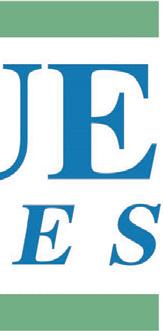
BUILDING 1 (FRONT BUILDING) ± 3,744 SF (+ 1,920 SF Basement)
➤ Ground-level office building with additional lower-level storage space
➤ Configured as two professional suites—one former dental practice (± 2,664 SF) and one smaller suite (± 1,080 SF)
➤ Potential for medical, office, or retail conversion
➤ Can be delivered vacant, offering immediate repositioning or owner-occupancy
BUILDING 2 (REAR BUILDING) ± 5,880 SF
➤ Single-tenant building on slab
➤ Leased through June 2026, providing interim income
➤ Flexible structure for future multi-tenant or redevelopment uses
➤ Exceptional frontage and visibility on Route 6, close to the Route 140 interconnect
➤ High-volume traffic exposure is ideal for professional office, retail, or mixed-use redevelopment
➤ Surrounded by complementary commercial, healthcare, and residential uses
➤ Strong demographics and ongoing growth of the SouthCoast Region
Whether you’re an Investor seeking dependable rental income with upside potential or a Developer eyeing a premier commercial parcel for redevelopment, 41 State Road stands out as a high-visibility, high-utility site with unmatched access and flexibility.






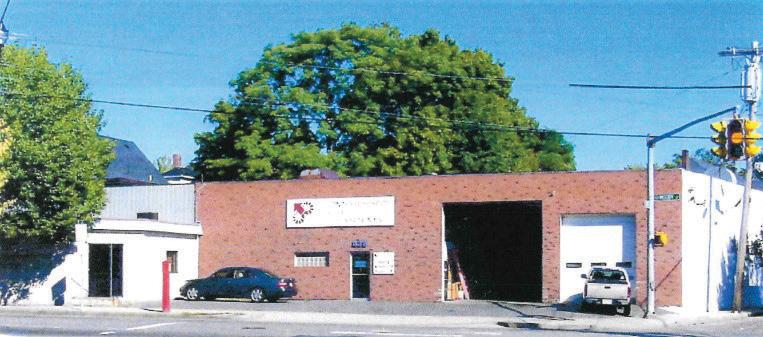





BY SUSAN FLETCHER
ging is inevitable, but it rarely feels uniform. The body creaks and slows, while the mind often continues to race with ideas. Or, more cruelly, the mind falters while the body remains strong. It is as if two clocks, wound at the exact time of birth, tick independently—sometimes aligned, while all too often, they are wildly out of step. Such a contradiction has intrigued philosophers for centuries and, more recently, scientists armed with microscopes and genetic assays. Many minds are occupied with the question: Why do our brains and bodies age on such different timetables, and what can we do to slow the drift? The answers lie in the cellular machinery that drives human

life, in the foods we choose daily, and perhaps in the supplements crowding pharmacy shelves. Yet the story is not merely about biology. It is about how modern science is piecing together a puzzle that may one day harmonize the rhythms of body and mind, offering a vision of aging that is not just longer, but a better quality of life.
CELLULAR CLOCKS, DIVERGING JOURNEYS
Physical aging is first visible on the surface: skin loses elasticity, muscles weaken, and bones thin. Deep within, the cellular explanation is clear, for each time a cell divides, the protective caps on our DNA—telomeres—shorten. Once a frayed cell passes a threshold, it will stop dividing and turn senescent. These cells are not inert; they release inflammatory signals that damage nearby tissues, accelerating frailty and leaving behind an image of old age.

The brain’s clock, however, tells a different story. Neurons do not divide and replace themselves in the same way muscle cells do. Instead, they rely on energy-rich mitochondria and the flexibility of synaptic connections—neuroplasticity. As decades pass, oxidative stress damages mitochondria, and toxic proteins such as beta-amyloid and tau can accumulate, derailing memory and executive function, leaving dementia or Alzheimer’s in its path.
Here is the essential divide: the body’s decline is often about mechanical wear and tear, while the brain’s decline is more chemical, rooted in the fragile balance of energy and protein metabolism. Lifestyle factors add nuance that can play a significant role in how we age. A disciplined runner may keep arteries supple yet still face dementia, while a lifelong reader may preserve clarity of thought while arthritic joints stiffen. Two clocks ticking to different vulnerabilities, rarely in sync.
If genes load the gun, lifestyle pulls the trigger, and diet may be the most powerful finger on that trigger. What we eat each day either accelerates the clocks or oils their gears. The well-published Mediterranean diet, rich in olive oil, fish, vegetables, and whole grains, has been repeatedly linked to both longer physical health and lower dementia risk.1 It’s been copied, imitated, and debated for years. Still, most investigators report that a similar, if not identical, type of diet is best for all of us.
Here are some factors that we should heed the next time we shop or dine out.
Leafy greens and crucifers —kale, spinach, broccoli— supply antioxidants and folate, repairing DNA and aiding neurotransmitter balance.
Fatty fish—salmon, sardines —deliver DHA and EPA, essential for flexible cell membranes in both neurons and blood vessels.
Nuts and seeds, particularly walnuts, tame inflammation and improve circulation to the brain.
Berries, with their deep pigments, slow oxidative stress in muscles and neurons alike.
Whole grains and legumes steady blood sugar, reducing the risk of diabetes, itself a major accelerant of dementia.
Refined sugars and processed carbohydrates stiffen tissues and impair cognition through glycation.
Processed meats are linked to both cardiovascular damage and higher dementia risk. (Stay away from Nitrates and Nitrites found at the deli case)
Trans fats —once ubiquitous in packaged goods—undermine vascular and neural integrity.
Excessive alcohol, which may quiet stress in the short term, but erodes memory and organ health over time.
The remarkable discovery that doesn’t get enough attention focuses on how the nutrients that keep arteries supple and inflammation low are the same ones that shield neurons. In this way, the two clocks—body and brain—can be wound by a single hand, three meals at a time. The choice is quite simple: follow a well-rounded diet and enjoy the added benefits of supporting your health with supplements. And while the shelves are loaded with promises of youth and vitality, we’re going to include only those that have powerfully demonstrated results or show some glimmer of success through research.
Here is the essential divide: the body’s decline is often about mechanical wear and tear, while the brain’s decline is more chemical, rooted in the fragile balance of energy and protein metabolism.
WELL-SUPPORTED ALLIES
Omega-3 fatty acids (DHA/EPA): Repeatedly tied to improved cardiovascular outcomes and reduced cognitive decline. 2
Vitamin D: Critical for bone density and immunity, with deficiency linked to muscle weakness and impaired cognition.
Creatine: A staple for athletes, it also supports brain energy metabolism, improving short-term memory and reducing fatigue.3
Magnesium: Essential for both nerve transmission and muscle contraction, often insufficient in modern diets.
EMERGING, BUT STILL UNPROVEN:
NAD+ boosters (NMN, nicotinamide riboside): Aim to restore cellular energy by reviving mitochondrial function. Human data remains early-stage.
Resveratrol: The compound in grape skins and red wine that activates longevity pathways in animals. Human trials remain inconsistent.
Nootropics —from L-theanine to lion’s mane mushroom— are marketed as brain enhancers, but most evidence comes from small or preliminary studies.
The key distinction is not to dismiss the frontier, but to recognize it as precisely that: uncharted territory. The temptation to seek one capsule that aligns the clocks is powerful, but the proven foundation remains food, movement, and rest. Supplements may add refinement, but they cannot replace the fundamentals.
SYNCHRONIZING THE TIMELINES
If the body and brain’s clocks cannot be perfectly aligned, can we at least coax them closer together? The answer lies in habits that nourish both systems simultaneously.
Exercise is perhaps the most potent single intervention. Aerobic workouts release brain-derived neurotrophic factor (BDNF), fertilizing neural growth, while resistance training preserves bone density and muscle power. Movement feeds both clocks at once.
Another vital addition to a healthy lifestyle is getting the correct amount of sleep. In deep phases, the brain flushes amyloid plaques while the body repairs tissues and balances hormones. To neglect nightly rest is to accelerate the decline of both body and mind. Today, stress management is not a luxury but a necessity. Chronic cortisol shortens telomeres and erodes synapses. Mindfulness, meditation, or even regular social connection can lower this destructive tide. Take an opportunity to chill as much as possible; worries and anxiety will always be readily available, so it’s crucial to combat or modify these threats.
Whether learning a language, debating over dinner, or playing music, these activities all strengthen neural networks and reduce inflammation. Are you seeing a theme here? Curiosity, it turns out, is as vital as cardio.
A unified approach, a synergy of choices serving one clock, can often preserve the other. To live well, we must not think of mind and body as separate systems but as instruments in the same orchestra, producing a harmony of interventions at our fingertips.
The paradox of aging—two clocks, one ticking in muscle and bone, the other in synapses and thought—will likely never be erased. But science is learning how to soften the dissonance. Diets rich in plants and fish, consistent movement, restorative sleep, and perhaps a judicious supplement or two, can bring the timelines closer together.
Future therapies may offer even more—bespoke molecules that halt or reverse decline. Until then, the tools available are deceptively simple yet profoundly effective. We can live in a way that nourishes both flesh and thought, aligning body and mind as best as biology allows.
To age, then, is not to surrender. It is to recognize the clocks, respect their rhythms, and choose, daily, to keep them in sync. H
1. Martínez-González, M. A., & Martín-Calvo, N. (2016). The major European dietary patterns and their relationship with health: Mediterranean diet, Nordic diet, and English diet. Nutrients, 8(9), 584.
2. Yurko-Mauro, K., et al. (2010). Beneficial effects of docosahexaenoic acid on cognition in age-related cognitive decline. Alzheimer’s & Dementia, 6(6), 456–464.
3. Rae, C., et al. (2003). Oral creatine monohydrate supplementation improves brain performance: a double–blind, placebo–controlled, cross–over trial. Proceedings of the Royal Society B: Biological Sciences, 270(1529), 2147–2150.7.


BY ROB SAINT LAURENT, M.ED.
In today’s healthcare, with greater numbers of hospital visits and a shortage of primary care physicians, long waits for appointments and less time with one’s doctor are a given. But that can change—for a fee.
In concierge medicine, consumers gain enhanced access to their primary care physician through a monthly or annual fee. Sometimes called boutique or retainer medicine, members typically enjoy around-the-clock doctor availability; personalized care, including in-home visits and priority emergency room care; and same-day appointments.
For many patients and doctors, the model is a win-win. Patients get the healthcare they need when they need it, while doctors are able to limit patient loads, enabling them to provide better quality service. Concierge doctors treat far fewer patients than conventional practice, ranging from six to eight patients daily per doctor for a workload reduction of 80-90 percent.1
Individuals pay $2,000-$5,000 per year on average (not covered by insurance), but membership can reach $10,000 or more annually in high-demand locations or for premium services. Generally, the higher the cost the more services provided, such as labs and X-rays.
Concierge medicine patients describe finally feeling heard by doctors taking the time to explain results and build a strong patient-provider connection, versus years of hurried and impersonal visits. They value the peace of mind it provides, especially during medical scares. They appreciate the convenience and coordination of care.
It’s a return to ‘small-town medicine,’ they say, with the added advantage of modern technology.
In concierge medicine, consumers gain enhanced access to their primary care physician through a monthly or annual fee. Sometimes called boutique or retainer medicine, members typically enjoy around-theclock doctor availability; personalized care, including in-home visits and priority emergency room care; and same-day appointments.

Concierge medicine’s popularity has risen steadily since it began in the 1990s; people search for personal solutions for reducing chronic disease risk and improving quality of life and longevity.
In 2024, U.S. concierge medicine was valued at $7.35 billion. Its market size is expected to expand more than 10 percent by 2030, as consumer awareness increases and more physicians make the switch.1
Unlike traditional healthcare, concierge medicine is able to advance preventive health strategies. Through tailored, proactive care and more time spent with one’s doctor, patients are empowered to better manage their health. Comprehensive assessments go beyond checkups, including in-depth talks concerning family health history, lifestyle habits, and disease risk. Patients benefit from personalized care, support for lifestyle changes, strong doctor-patient bond, and accessibility and convenience.2
The concierge care model excels at early detection, with some providers delving into precision medicine, offering comprehensive blood panels and genetic testing as part of their personalized programs.
Concierge MD has offices nationwide and provides in-home care, virtual services, lab testing, hormonal analysis, and advanced cancer detection. Their genetic tests include, for instance, a genetic cancer panel that assesses 81 genes, an analysis of over 150 genetic markers for metabolic, hormonal, and brain health, and ;an epigenetic biological age test.
Another, LifeSpan Medicine, focuses on healthspan and longevity with a combination of traditional and alternative therapies. Their higher-end, regenerative health packages include comprehensive blood analysis and genetic testing.
Research shows significantly increased satisfaction in both patients and physicians with concierge medicine, though clinical outcomes data is limited.
The authors also note that studies by concierge care organizations showing improved patient satisfaction and reduced hospital visits often fail to account for who elects to join concierge medicine and lack comparison to those who choose not to join.5
Still, research highlights the importance of precision medical services like comprehensive blood panels and genetic testing for disease prevention.
In The American Journal of the Medical Sciences, medical experts discuss the vital importance of blood testing for cardiovascular diseases, diabetes, chronic kidney disease, vitamin D and iron deficiency, and rheumatoid arthritis. Though the effect of blood analysis on long-term health outcomes is also understudied, the authors say existing evidence suggests that delayed screening and diagnosis would lead to increased disease progression and worse clinical outcomes.6
Concierge care may be a good fit for those who value personalized attention, convenience, have unpredictable schedules, and need frequent medical attention that doesn’t require specialist referral, say industry experts. But it may not be good for those with tight budgets or who don’t often visit their primary care physician, or those who need of a lot of specialist visits or undergo frequent hospital stays.
A 2025 analysis of 49 studies found higher patient satisfaction from shorter wait periods, better physician access, and longer appointments. Same-day appointments and continuity of care were valued by patients. Likewise, physicians were found to have higher job satisfaction and able to place more emphasis on preventive medicine. They report greater independent decision-making and the ability for stronger patient relations.3
While patient health outcomes of concierge medicine are understudied, existing research shows improvement in disease progression and management of conditions like diabetes and hypertension. Patients have less emergency room visits and hospital admissions.3, 4
On the other hand, a study in the Journal of Health Economics, examined hundreds of primary care physicians who switched to concierge care found that those patients who followed them into the fee-based model showed no difference in mortality than similar patients whose doctors hadn’t yet switched. This is despite concierge patients spending 30 to 50 percent more on their care than before the switch.3, 5
Genetic testing for hereditary cancer risks can enable early intervention, such as lifestyle changes for individuals and their relatives. Concierge medicine has the ability to streamline access by offering point-of-care testing, which research has shown to more than double the rate of usage versus traditional referral.7, 8
Experts say up to 5 percent of the general population harbors genetic mutations linked to cancer.
Many people value the personal, tailored service that concierge medicine affords, especially for primary care.
Concierge care can benefit those in need of frequent care with no or minimal need for specialist referral, as with routine management of a chronic condition. For generally healthy people who anticipate just basic medical needs, concierge care may or may not be more costeffective than traditional care.
Since concierge medicine typically involves just primary care or another medical specialty, patients typically maintain their health insurance in the event of hospitalization or need for a specialist, and to cover any services not included in their annual membership fee.
Theoretically, the concierge care model may be able to save patients and hospitals money in the long run by preventing diseases and identifying problems early on, investigators say. But this may depend on the model adequately addressing the neediest members’ health needs and not just being reflective of a general desire for convenience, quality service, or amenities.5
There are obvious financial barriers with concierge medicine, particularly in today’s inflationary environment. Membership fees plus carrying health insurance for unforeseen circumstances is prohibitive for a great many Americans. Research has found wealth, not health, to be the driving influence in selecting concierge medicine.5
Researchers say concierge care is attractive to primary care providers, as they perform few procedures that are highly reimbursable. In traditional care, they generate revenue in
volume, with insurers paying highest for shorter patient visits under 15 minutes.5
As more primary care doctors make the switch to concierge medicine, with fewer patients per doctor, the current physician shortage may worsen for the broader population. For those with lower income and/or chronic conditions, like diabetes, this can mean unequal access to healthcare, widening the gulf between haves and have-nots and raising ethical concerns.
There are also a number of concierge medicine patients with buyer’s remorse.
People report disappointment with quality of care and unmet expectations. People who don’t use the service frequently, or take advantage of perks like wellness coaching, feel they’re just paying for better access, not better care. Others report problems with app functionality and unhelpful staff.
At least one physician notes concierge medicine can actually lead to worse care from unnecessary procedures and tests, where increased access and longer appointments can lead to overtreatment. Convenience can overshadow evidence-based care when patient preferences are held above clinical guidelines.
Because there are no standardized protocols, quality of care can vary between practices.
With research on patient health outcomes and long-term financial burden from concierge medicine lacking, researchers say the healthcare model’s greatest impact may be patient experience of improved care.3

Concierge care may be a good fit for those who value personalized attention, convenience, have unpredictable schedules, and need frequent medical attention that doesn’t require specialist referral, say industry experts. But it may not be good for those with tight budgets or who don’t often visit their primary care physician, or those who need of a lot of specialist visits or undergo frequent hospital stays.
It’s essential to determine whether concierge care aligns with one’s preferences, values, and financial condition. For the more fortunate, it may be a matter of reevaluating priorities and diverting yearly vacation funds to one’s health. H
1. Grand View Research. (n.d.). U.S. Concierge Medicine Market (2025-2030).
2. Editorial Team. (2025, January 17). The Role of Concierge Medicine in Preventive Health Strategies. Healthcare Business Today.
3. Rylands, K. S., Collins, C. M., & Collins Jr., D. R. (2025, September). Maximizing the Value of Concierge Medicine: A Systematic Review of Cost, Access, and Outcomes. The American Journal of Medicine, 138 (9), 1201-13.
4. Salman, A. & Safeer, K. (2024, June). A literature review on the impact of concierge medicine services on individual healthcare. Journal of Family Medicine and Primary Care, 13 (6), 2183-86.
5. Leive, A. David, G., & Candon, M. (2023, July). On resource allocation in healthcare: The case of concierge medicine. Journal of Health Economics, 90, 102776.
6. Cabalar, I., Le, T. H., Silber, A., et al. (2024, October). The role of blood testing in prevention, diagnosis, and management of chronic diseases: a review. The American Journal of the Medical Sciences, 368 (4), 274-68.
7. UT Health San Antonio. (2024, September 6). The role of genetic testing in cancer prevention and treatment.
8. Kefalas, M. (2023, May 16). New Study Shows CancerIQ Plus Point-of-Care Genetic Testing Improves Access to Precision Prevention [Press release]. Business Wire.










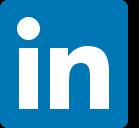




Are you facing the challenges of caring for a loved one at home? Perhaps trying to wholeheartedly balance their needs and the daily demands life delivers you?
If this sounds familiar, we are here to assist you in providing an unmatched standard of Adult Foster Care benefits for those striving to stay in their homes.
Mass Care Link is evolutionary, providing a monthly payment to those caring for someone at home while supporting them with a personalized touch.
Costing less than assisted living facilities and nursing homes, with a record of compassion and empathy, we cover the unique needs of our clients.
Families and individuals rely on our services to:
• Ensure caregivers receive a tax-free monthly stipend/payment
• Review and verify MassHealth paperwork and qualifications
• Train and assist with the management and demand of providing 24-hour care
You may not know this fact, but if you qualify as an at-home caregiver, you can earn up to $18,240 yearly.
For a caregiver to meet state requirements, they must:
• Be at least 18 years of age
• Reside in the same home as the person they care for
• Not be the legal guardian or legally married to the person being cared for
• Provide necessary medical care and assistance that meets the needs of the person they care for
For your family member or loved one to qualify for Mass Care Link services, they must meet these eligibility points:
• Be 16 years of age or older
• Be approved for MassHealth insurance
• Live with the primary caregiver in the same home
• Require supervision and cueing, or physical assistance daily with at least one of the following needs: bathing, toileting, ambulation, transferring, eating, and/or dressing.
If this sounds attractive and meets your level of interest, contact us today for additional information or to schedule an appointment.
Mass Care Link, Inc.
99 South Main Street, Fall River, Massachusetts 02721 Hablamos Español | Falamos Português call for more information or visit us online at:


BY STEVEN CHAN
In its purest form, ‘Neuro-dating’ (Nd for our use) refers to introductions and social interactions primarily found within neurodivergent communities, where communication and social interactions might be significantly different from what some would venture to say is normal, albeit going out on a limb with such a term would be a bit reckless and inaccurate. From a clinical perspective, Nd establishes a baseline for sequencing events, apps, and services to address the challenges and learning styles of people with pronounced neurological differences, specifically how some brains process and interpret stimuli. It doesn’t mean that those with differences are less able to interact and form partnerships; instead, the term includes a spectrum of medical diagnoses, learning disabilities, and other conditions, such as varying degrees of Autism.
During Nd’s short life span, its protocols and use have skyrocketed within the parameters we detail. The results have led to specialized tools and accommodations for neurodivergent people who need a more comfortable and different pace than traditional dating rituals, which are often felt as overwhelming. Included in a suite of means and methods for providing alternative connections, specialized events are designed to be sensory-limiting, pressure-free, and assist with‘social prompting’ between possible matches. Platforms serving neurodivergent singles come as specialized apps designed for users to find friendships and romantic partners in a safe and controlled environment that fosters authentic matches. The objective is to help this community understand their differences related to brain chemistry and function, with a focus on ‘sensory sensitivities.’ Instead of being compelled to hide their alternative social communication styles, they are encouraged to embrace variations and taught alternative pathways for building satisfying partnerships.
While the practice of applying neuroscience to dating may be considered novel to some, its origins lie in decades of research into the brain’s role in attraction, attachment, and pair-bonding. Pioneering work by biological anthropologist Dr. Helen Fisher and others has explored the neurological underpinnings of love, identifying three distinct brain systems involved in romantic relationships: the sex drive, romantic love, and companionate love. This research revealed that falling intensely in love activates the brain’s reward system, releasing dopamine and creating a euphoric ‘high.’ These findings lay the groundwork for understanding that romantic love is not merely a cultural construct but a deeply ingrained, universal human drive.
Further studies have shown that the brain changes in response to long-term relationships, with mature love characterized by higher levels of oxytocin, the ‘bonding hormone.’ This shift in brain chemistry from an initial obsessive fire, to a steady warm burn, provides a neurological basis for the transition from passionate love to enduring attachment. However, neuroscience also reveals that for some, the high-intensity romantic love can be sustained long-term, showing that the flame doesn’t always have to cool.
Building on this foundational research, the concept of applying these insights to personal relationships gained prominence as singles grew weary of the emotional rollercoaster of casual, ambiguous encounters. The rise of intentional, slow, and mindful dating reflects a broader cultural shift towards more deliberate and thoughtful connections, with neuro-informed dating emerging as a sophisticated extension of this new form of connection. It moves beyond generic self-help to offer a science-backed framework for understanding why we connect with certain people and how to cultivate relationships that are built to last.
Today’s discerning singles thirst for answers from an agent who can assist in finding a lasting partnership by understanding the brain science behind affection, attraction, and compatibility. With this information, the mindless scrolling, mismatched connections, and short-lived ‘situationships’ that have left many jaded by modern romance can be addressed with a formidable solution. Outside of being considered a trend, Nd represents a fundamental evolution in how we as humans pursue love, shifting the focus from superficial checklists to the deep neural pathways that foster genuine, longterm intimacy based on the premise.
Even though the brain leads the heart, real chemistry is more than just a fleeting spark—it’s a neurological harmony built on understanding, empathy, and effective communication.
For years, the playbook for intimacy was simple. Meet, flirt, and fall in love. But as our lives have grown more complex, so have our relationships. The rise of dating apps initially promised an abundance of choice, but has since left many with ‘swipe fatigue’ and a sense of disillusionment and betrayal hosted by frauds and impostors. And for those lucky enough to catch a real person, the transactional nature of these platforms often leads people to accept falsely highlighted reels or profiles, sidelining genuine emotional and intellectual connections in favor of surface-level attraction that dishes outlandish expectations. These examples have led to a rise in ambiguous connections—from ‘friends with benefits’ to the dreaded ‘situationship’—that lack clarity and emotional security. A generation of singles is now seeking coursecorrect, turning away from fleeting, low-commitment encounters and toward a more mindful approach to love.
The initial spark of attraction is powerful, and neuroscience shows us exactly why. It’s driven by a flood of neurotransmitters, including dopamine, which is super potent and rushes to trigger the brain’s reward system. Thrilling, but if not handled consciously, it can be mistaken for compatibility. Nd teaches us to move beyond this initial rush and assess a connection more mindfully. As a relationship matures, different chemicals take over. Oxytocin is released through physical touch and emotional

closeness, solidifying attachment and trust. Vasopressin, another powerful hormone, also plays a crucial role in long-term pair bonding. By understanding these neurological shifts, we can appreciate that lasting love is less about the initial dizzying high and more about the slower, steadier build of genuine connection.
One of the most valuable lessons from Nd is the importance of understanding different communication styles. While many of us assume others process information and express feelings in the same way we do, neuroscience reveals a natural variation in brain function, known as neurodiversity. Embracing this means moving beyond rigid communication norms and learning to connect in more authentic ways.
✦ A new intimacy: Neurotypical communication often relies on subtle social cues, implied meanings, and interpreting unspoken expectations. Utilizing a neuro-dating approach encourages couples to communicate clearly, directly, and without judgment. It isn’t about changing who you are but about creating a more inclusive and empathetic dynamic where both partners feel safe and understood.
✦ Conflict as a growth opportunity: Conflicts in neuroblended relationships often stem from mismatched empathy and different perspectives. Rather than assuming harmful intent, Nd encourages partners to approach arguments with curiosity. Asking questions like, “How did you process that?” or “What’s going on with you today?” can transform a fight into a more profound understanding.
✦ Processing: Nd takes hold of the notion and practices of respect, accompanied by the need for ‘time-outs’ during heated moments, so that both partners can regulate their nervous systems and return to the conversation with more calm and clarity.
Nd is ultimately an exercise in being attentive and intentional. Tired of the paradox of choice that plagues modern dating, enlightened singles are embracing a ‘slow dating’ philosophy. It’s about prioritizing quality over quantity, investing time in fewer, more meaningful connections, and focusing on long-term compatibility rather than immediate gratification. For singles who have grown weary of ‘situationships,’ this approach is revolutionary. Instead of passively waiting to be chosen, intentional dating requires you to define what you want and need in a partnership. It’s about setting clear boundaries and knowing your value. It’s also about trusting your ‘Gut to Brain’ connections and learning to recognize your reactions during Nd. Paying attention to red flags, rather than rationalizing them away, is a key takeaway on how successful you will be in finding lasting love.
Even though the brain leads the heart, real chemistry is more than just a fleeting spark—it’s a neurological harmony built on understanding, empathy, and effective communication. Relationships should be built on a foundation of genuineness, allowing both partners to be themselves, rather than on pretense. Compatibility based on mutual understanding is more reliable than hoping for a perfect, serendipitous match.
Finally, emotional maturity is an essential ingredient for developing a harmonious connection; without significant personal understanding, it isn’t likely you will be able to integrate a person into your life, and the same is true for them. Identifying one’s objectives and goals in advance will be a determining factor in both the progress and success of a new relationship. In a world where many young men and women are dependent on outside support systems, beginning with their parents who overburdened them with protection from an early age, attempting an Ng relationship will probably yield disappointing outcomes if caution isn’t exercised. As evidence of this claim, recently, during a conversation with a young man who was sharing his dating experiences claimed, “What’s frustrating about my generation and dating is that almost everyone in their late 20s behaves as if they were ten years younger…28 is the new 18; it’s like they all want it now and think someone else is going to make it happen.”
We feel your pain, but it doesn’t mean you shouldn’t up your game! H


During a recent discussion with a ‘Swifty,’ I was forced to ask what her opinion was specific to Taylor Swift’s insidious affair with money. Taken aback, they asked what I meant; their face froze with fright at the prospect of my answer. I gently explained that I have watched a girl with a dream and bleeding fingers rise to riches—which is okay, because I believe in capitalism, while at the same time, I am compelled to question at what level of money does a person feel a personal obligation for returning something back to fans who are responsible for the artist’s ascent? In this case, it seems the billionaire superstar, worth an estimated $1.6-$2.billion (according to Bloomberg, October 2025), could have easily offered her die-hard fans free admission to her new movie with evidence of their commitment to her continued growth byway of a ticket stub or T-shirt from one of her shows. From a business perspective, the whole program would have turned into an expense that would offer her a sizable deduction for her 2025 taxes. Such a gracious act would have been a win-win campaign, especially from the PR value. Swift would have enjoyed the longevity of showing she is as loyal to her fans, as they are to her.
After this Q&A, I decided to take a closer look at what the average fans (parents, or date) might spend on a single concert event; here is what I found:
Taylor Swift’s estimated yearly income from all sources is just under $700 million, driven by touring (earning up to $13 million per show, netting $5-6 million per night after expenses), album sales, branding, and merchandise.
To pay homage at one of her events, the average total cost (including transportation, parking, ticket, food, beverages, and officially bought merchandise) ranges from about $400 for the most basic experience to over $3,000 for premium tickets and a full suite of extras.
HERE IS WHAT FANS CAN EXPECT TO INVEST IN A ONE-TIME SHOW BY SWIFT:
Tickets: Standard ticket prices for U.S. shows range from $49 to $499 (face value), with resale and secondary market prices averaging $2,000-$2,800 for high-demand dates and locations.
Transportation: Local transport (public subway, rideshare) or gas typically costs $20-$60 per person for city concerts. Out-of-town trips (flight+hotel) may add $300-$1,000.
Parking: Event parking at stadiums commonly ranges from $30-$80.
Food/Beverages: Concession prices, including a meal and a drink, usually average $30-$50.
Swag/Merchandise: Official Eras Tour merchandise (T-shirts, hoodies, tote bags, etc.) runs $40-$120 for standard items; most fans spend $60-$150.
Most attendees spend between $400-$700 for a regular ticket, local transportation, parking, snacks, and a T-shirt. In contrast, those seeking premium seats or flying in from out of town can easily spend several thousand dollars for an all-out Swiftie experience.
In learning about this genius of brand building and marketing, and coupling it with the very few times I’ve attended a professional sporting event which also charges an embarrassing amount of money for a fleeting moment of hysteria, my gut said, it’s time to let the public in on a secret; one that is often hidden by flash, social media and its push to validate young minds into herd behavior in an attempt to part them from a prosperous financial future.
We note that everyone’s view is different and respect the validity they apply to their lifestyle thesis. However, in this case, it’s nearly impossible to argue the relevance and outcome offered by our findings.
Borrowing a tag line and adding our own twist, from Jim Cramer’s introduction to Mad Money, seen on CNBC weekday nights, we want you to know that “We’re not here to make friends, but will show you how to stay poor and become destitute in your later years.”
We decided to create a tongue-in-cheek guide to turn many of the dollars you make into someone else’s fortune. It’s a not-socommon-sense guide to staying broke while feeding lifestyle habits, hence, our title, How to Stay Broke in Style: The Art of Financial Self-Sabotage.
Most people dream of wealth, freedom, and early retirement— but some seem more committed to avoiding those goals at all costs. If you too want to make sure you never build financial security, follow this foolproof plan for staying broke while looking fabulous doing it.
Why invest in an index fund when you can invest in lattes? At $6 per coffee, plus tax and tip (which is not included in our analysis), three coffees per week total about $936 per year. Over 20 years, that adds up to roughly $18,720 spent—but if invested in an S&P 500 index fund averaging 8 percent annual returns, you’d have over $41,400 waiting for you in no time.
But, to hell with this idea of social isolation, of course, it’s better to look cool with that logo covered coffee in hand for about 10-15 minutes; its part of your ‘look;’ and so don’t abandon the appropriation, act on our convoluted advice and skip the savings plan, hand over your cash or credit card (that doesn’t get paid in full monthly) so your favorite café can compound their profits instead of you. (For full disclosure, we own stock in Starbucks and hope this is your choice of coffee vendor.)
Few things scream ‘financial genius’ like dropping $300$400 or more, three times a year, on major sporting events and concerts. That’s $900 a year, or $18,000 over 20 years, and this is at the lower end of estimates. Invested in an average tech stock at 10 percent returns, that money would grow to over $57,000. But why would you trade a phone filled with blurry photos, ringing ears, and heartburn from the tailgate party in the parking lot instead of the long-term accumulation of wealth? It’s only fitting to leave your entire paycheck on the table for rich athletes, performers, and organizers who are living your dream. You are a very thoughtful fan, and we know they appreciate your generosity.
Spend $400 twice a month on dinners, wine, and impressing someone who isn’t that into you. (This is way underestimated; today, it’s expected weekly). That’s $9,600 a year—which, if invested over 20 years, could become a staggering $440,000 at 8 percent returns.
Continue your philanthropic efforts of funding fancy restaurants and feeding the up-and-coming, Michelin Star foodchallenged babes you’re only going to see once or until the money runs out. Hey, it was fun while it lasted—NEXT!
Pay a lease of $900 a month (plus $3,000 down and mileage overages) for three years, then return the car and walk away with…nothing.
Total out-of-pocket: about $38,000 over three years. If you’d bought a solid used car for cash and invested the difference— say $12,000 per year—you’d have nearly $300,000 after 20 years.
The road to rags is fast-tracked when the question is asked: Why own assets when you can own memories of depreciation?
STEP 5: CARRY CREDIT CARD DEBT LIKE IT’S A TROPHY
Keep a $5,000 balance for 10 years at 20 percent interest, paying only the interest. Double the balance, and the bank will send you a Christmas card each year.
Total spent: $10,000 in pure interest—and the balance never shrinks.
It’s time to spring for that Gold or Platinum card that only impresses you. The financial institutions will thank you for your loyalty and effort in paying them for the privilege of giving you pennies on the dollar in rewards you’ll probably never use.
STEP 6: FORGET TO SAVE SMALL AMOUNTS—BECAUSE IT ‘ DOESN’T MATTER’
$100 per month? That’s insignificant, correct?
Wrong. Over 20 years, with an annual compound interest rate of 8 percent, that tiny monthly saving would become nearly $59,000.
Ignoring small savings ensures your financial goals stay safely out of reach; never add a little extra that will work to your favor and earn compounding interest.
Let’s recap your perfectly reasonable lifestyle choices and the lost opportunity if invested instead:
$936/year
$900/year
$9,600/year
$41,400
$57,000
$440,000
To truly illustrate the power of timing, we extended our analysis to age 67, showing how starting early dramatically multiplies wealth.
Annual investment: $25,302.67 (sum of all “wasteful” habits)
Annual return: 8%, compounded annually
Starting ages: 18, 21, 24, 27, 30, 33, 35, 38, 41
Years invested: varies from 49 (starting at 18) to 26 (starting at 41)
If you want to sabotage your financial future, do the following:
— Spend emotionally, not intentionally
— Chase instant pleasure over long-term gain
— Purchase depreciating assets over those that appreciate
Assume you can wait to handle today’s fiscal mistake tomorrow
Alternatively, if you’d rather not make your favorite corporations rich and believe in yourself rather than seeking approval from others, do the opposite:
+ Avoid debt like it’s contagious— because it is addictive
+ Let time and compounding be your business partners
+ Don’t invest in a relationship; partner with one
+ Purchase income-producing assets with long-term appreciation; it’s money made twice on a single purchase
Time is the single most valuable commodity on this earth, and while you can’t buy it, you can leverage it to create true wealth. It begins today or tomorrow morning, when you say to yourself, “No, I don’t need that latte.” It won’t take long for you to realize that often, the most luxurious decision of all is to pass on a whim that funds a better future. H
This staggered bar chart visually screams: the earlier you start, the more money works for you—literally tens of millions more. While it wouldn’t take much from your daily life to end up with possibly even more than the nearly estimated $13 million shown here by making easy adjustments in your lifestyle, still, even with solid evidence, few ever become the one-percenters they pretended to be during their lives.
The holidays invite us to pause, reflect, and celebrate. We search for gifts that feel different from the rest of the year—gifts that say I see you, I know you, I want to give you something that lasts. Too often, we fall back on what’s quick and forgettable. But occasionally, a gift can rise above the seasonal rush. It can be as enduring as the person receiving it, as meaningful as the bond you share.
If you’ve lived in New England long enough, you may know the company’s Massachusetts roots. Founded in 1987, Levenger began with a small but powerful idea: readers and writers deserved better tools. Not gadgets, not novelties—tools. The kinds of objects that last decades, crafted with care, designed to elevate everyday rituals of reading, writing, and organizing. From those beginnings, Levenger grew into a nationally recognized name for people who still value the written word and the art of thoughtful living.


In an era when handwriting was being declared obsolete, Levenger stood as a counterpoint, insisting that writing was alive and well—and that it deserved instruments as refined as any fine watch or piece of jewelry.
Today, the company offers an array of beautifully made products. But for this holiday season, two collections shine especially bright: the True Writer line of pens and the Bomber Jacket leather collection. Together, they offer a gift story that blends personal meaning with lasting elegance.
There is something extraordinary about a pen that feels right. You notice it the moment you hold it: the balance, the weight, the way the nib or tip moves across the page. A good pen doesn’t just record thoughts—it invites them. It slows you down, reminds you that your words are worth the moment it takes to put them on paper.
Levenger’s True Writer line embodies that philosophy. From the smooth roll
of ink to the carefully considered finishes, these pens are crafted not to be disposable but to be kept. The very name “True Writer” nods to the idea that writing deserves authenticity—an instrument that does not falter, that makes the act itself more pleasurable. Picture someone unwrapping a Levenger writing instrument during the holidays. They lift the box lid and see not just a pen, but an invitation. For the graduate about to embark on their first job, it’s the companion for notes and signatures that mark the start of a career. For the executive, it becomes the everyday instrument that gives weight to decisions and contracts. For the parent, it’s the pen used to write birthday cards, holiday greetings, or even the occasional journal entry.
In each case, the pen becomes more than an object. It becomes part of the story. Years later, when the ink cartridge has been replaced many times, the pen still holds the memory of the first moment it was given.
That’s the beauty of gifting a True Writer— it is as timeless as the act of writing itself.
If the True Writer celebrates the act of writing, the Bomber Jacket collection celebrates the space where writing—and living—happens.
The name itself carries a sense of heritage. The collection is made from the same kind of full-grain leather that once covered the jackets of WWII fighter pilots. It’s strong yet supple, rugged yet refined, with that unmistakable richness of genuine leather that grows more beautiful as the years pass.
A Bomber Jacket folio or desk tray isn’t just functional; it’s evocative. Imagine giving one to a young professional. They slip it into their bag and carry it from meeting to meeting, the leather softening slightly with every use, developing a patina that’s
entirely their own. Or imagine a parent receiving a Bomber Jacket desk accessory—the tray catching letters, the folio protecting their notebooks and papers. Every day, the leather signals permanence, a reminder that some things don’t need to be rushed or replaced.
And there’s something else: leather remembers. A scuff, a mark, a softening at the edges—all of it becomes part of the story of the person who carried it. Unlike so many modern gifts, these are pieces meant to age alongside their owners, to become more personal, not less, with time.
It’s easy to see why these two collections complement each other. A pen for the hand, leather for the desk or the journey. One captures the words; the other carries and protects them.
Give them together, and you create a gift set that feels complete: a True Writer pen tucked into a Bomber Jacket folio, ready for a new year of ideas, meetings, and moments. Or perhaps the pen is for one recipient, the leather for another— two gifts that carry the same signature of thoughtfulness.
What matters most is that neither feels fleeting; they don’t chase trends and will never be destined for a junk drawer. They are tools for life, imbued with style and built for use.

The truth is, in 2025, the digital world consumes most of our waking hours. We swipe, we type, we scroll. And yet, in the midst of all this, the human instinct to write by hand—to sit with a notebook, to sign our names, to sketch an idea—hasn’t gone away. If anything, it feels more precious than ever.
That’s why giving Levenger gifts this holiday season is more than simply choosing something beautiful. It’s a quiet act of preservation. It says: slow down, enjoy this, your words have weight. It’s a recognition that what we create by hand, and what we keep close, still matters in a fast-moving world.
And perhaps that’s why Levenger’s Massachusetts-born spirit resonates so well during the holidays. There’s a New England sensibility to it: thoughtful, enduring, never flashy for the sake of it. These are gifts hat don’t shout—they speak softly, with substance.
The best holiday gifts leave an imprint long after the season ends. A fine sweater wears out. A gadget becomes obsolete. But a pen that still glides across paper after years of use? A leather folio that holds notes, letters, and plans through countless days? Those endure.
So this season, when you’re considering what to place beneath the tree or wrap with care, think about the impression you want to leave. Do you want your gift to be used up—or to be carried, remembered, even cherished?
A True Writer pen. A Bomber Jacket folio. Each is an invitation: to write, to reflect, to live with intention. Together, they’re more than a gift. They’re a promise that the person receiving them matters enough to deserve something lasting.
Because the holidays aren’t really about things. They’re about meaning. And meaning, this year, comes beautifully wrapped from Levenger.
For more information and to view the Levenger catalog, visit Levenger.com H



















Each year, as the holidays approach, Rhode Island bursts into color in a way that has nothing to do with twinkling lights or garlands. For two festive weekends only, the historic Pawtucket Armory becomes the state’s beating artistic heart, filled with the energy of more than 65 professional artists and the crowds who come to celebrate them.
This December, the Foundry Artists Association invites you to its 43rd Annual Holiday Show & Sale. This beloved New England tradition combines high-quality, juried artwork with the joy of community. It is free, open to the public, and unlike anything else in the region.










The Foundry Artists Show began in 1982, when a collective of Rhode Island artists decided to open their I-95 Foundry Building studios during the holiday season. The idea was simple yet inspired: bring art directly to the public at a time of year when gifts are exchanged, homes are decorated, and creativity is celebrated.
When the original Foundry Building was converted to office space in the 1990s, the artists scattered to new studios across the region but refused to let the tradition fade. They found a new home in the Pawtucket Armory—a castle-like landmark built in 1894—and transformed its massive drill







hall into a dazzling holiday marketplace. Today, that same drill hall, restored and reimagined, continues to host what has become Rhode Island’s premier holiday art event.
For more than 40 years, families have marked their calendars for this annual show. Parents who once came as children now return with kids of their own, creating memories in a space that blends history, creativity, and community spirit.
The excitement begins with the Opening Night Reception on Thursday, December 4, from 5-9 p.m. This evening sets the tone for the event: festive music, lively
conversation, and the thrill of meeting the artists behind the work. From glass blowers to jewelry makers, painters to woodworkers—you will have the rare chance to connect directly with creators while discovering one-of-a-kind pieces. The reception is a highlight not only because of the art, but because of the atmosphere. There is nothing quite like strolling beneath the Armory’s soaring ceilings and finding that perfect piece that speaks to you or a loved one. It’s shopping, yes—but elevated to an experience.
After opening night, the show continues across two weekends to explore, browse, shop, and savor:
Friday, December 5, 12-8 p.m.
Saturday, December 6, 10 a.m.-5 p.m.
Sunday, December 7, 10 a.m.-5 p.m.
Friday, December 12, 12-8 p.m.
Saturday, December 13, 10 a.m.-5 p.m.
Sunday, December 14, 10 a.m.-5 p.m.
Part of the Foundry Show’s magic lies in its diversity. It’s not a flea market, nor is it an elite gallery closed off to the everyday shopper. Every participating artist has been juried in, ensuring that quality remains at the highest standard.
You’ll find:
n Fine art glass that glimmers with light
n Sculptures and paintings that can transform a living space
n Jewelry that sparkles with originality
n Fiber arts —wearable or decorative— bringing warmth and texture to the season
n Ceramics and woodwork that blend function with beauty
n Mixed media, photography, and artisan goods ranging from handmade books to beauty products
Each booth is a discovery, each table a conversation, each item a potential heirloom. Best of all, Rhode Island exempts fine art from sales tax, meaning your holiday shopping is not only meaningful but economical.
What makes the Foundry Artists Holiday Show & Sale especially rare is the way it is organized. The event is produced and managed by the artists themselves; they design the advertisements, hang the signage, manage the finances, operate the checkout desk, and even set up the electrical wiring.
This hands-on approach builds a sense of camaraderie that attendees can feel. When you walk into the Armory, you are entering not just a marketplace, but a family effort crafted with care. The passion of the artists radiates not only from their work, but from the environment they have created.
Art is at the center of this event, but so is generosity. The Foundry Artists Association has a long-standing commitment to giving back to the community. Each year, a silent auction showcases donated works by participating artists, with proceeds going to a local charity. Over the decades, funds have supported organizations ranging from animal shelters to child-welfare services.
Additionally, the show has embraced a tradition of collecting canned goods and donations for the Rhode Island Food Bank. Admission is free, but visitors are encouraged to bring non-perishable items or small contributions to help neighbors in need. After the show, a van loaded with boxes from generous donors leaves the Armory.
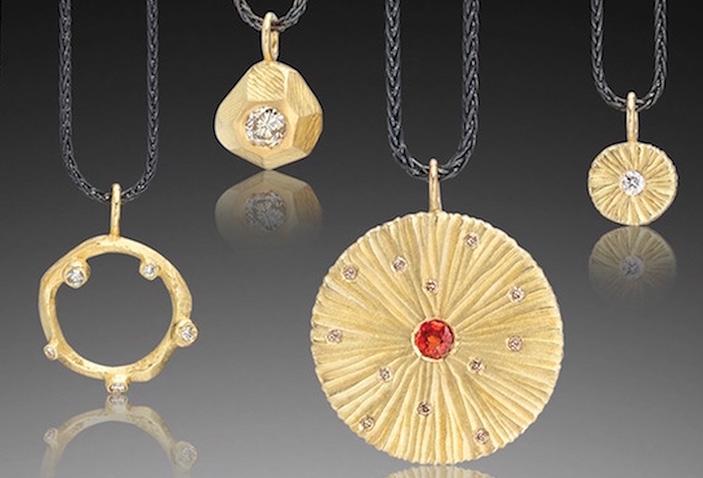
What sets this event apart is the way it transforms holiday shopping into an experience of connection. Each painting, bowl, necklace, or scarf carries not only the skill of its maker but also a personal story. You can look an artist in the eye, hear how they shaped their vision, and carry that story home with you.
Mark your calendars now for December 4-14, 2025. Whether you come for the opening reception, a quick lunchtime stroll, or a leisurely weekend browse, you’ll leave with more than just purchases—you’ll leave inspired.
The Pawtucket Armory is located at 172 Exchange Street, Pawtucket, RI. The building is handicap accessible, with designated entrances and facilities. Major credit cards are accepted.
To learn more, visit foundryshow.com or follow along on Facebook at facebook.com/ foundryshow for updates, previews, and behind-the-scenes glimpses. H

MEDIA
SPONSOR:

For an upcoming issue, we’re taking a different approach by searching for a unicorn of sorts.
We hope that someone within our vast audience is passionate about fashionleather; black, white, red, blue, or tan— the more the better.
The ideal candidate should:
➤ Wear
➤ Model
➤ Design
➤ Or construct leather clothing and is committed to the craft.
If you have a current line to share with readers, many who appreciate bespoke, custom design, or just love wearing hides, and you’d like to see it on our covers, we offer an opportunity to shine.
Are we asking for too much? Maybe, and why not? We’re not your grandmother’s knitting magazine.
Send us an email or call, let us know you’re out there.

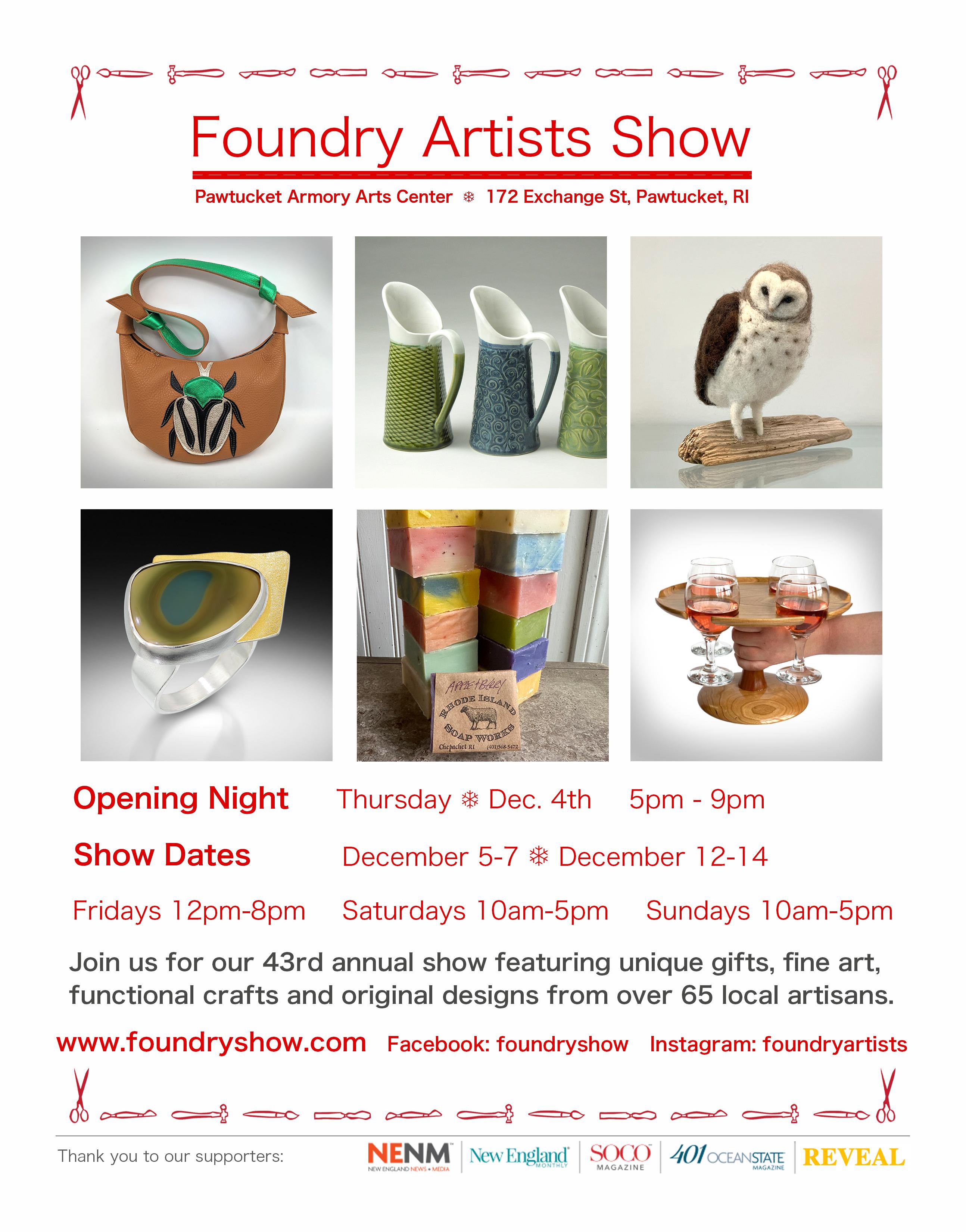
For thousands of Southern New Englanders, BayCoast Bank has introduced an opportunity to improve their financial well-being during the recent federal government shut-down. This vital new economic program is intended to support active-duty military and other essential government employees impacted by the pause of payroll disbursements, which has caused an uptick in anxiety and stress for many families.
The program is designed to provide valuable gap financing assistance to those who are unable to cover their monthly living expenses. With uncertainty as to when Washington will be able to resolve the matter, Nicholas M. Christ, President and CEO of BayCoast Bank, made these comments to his current customers with an invitation to new ones. “We truly care about assisting our neighbors, and it is our hope this program will help ease any potential hardship for individuals and families affected by the government funding lapse.”
With loan amounts available from $1,000 to $15,000, to those who qualify for BayCoast Bank’s Emergency Federal Employee Loan Program, participants will receive interest-free financing for
six months. Most notable is that the anticipated turnaround time for this new loan program, from application approval to funding, will take approximately one to two business days.
Participation and restrictions for eligible federal government employees are based on the following:
n Active-duty military personnel
n Federal law enforcement officers (Border Patrol, Customs and Border Protection, FBI, DEA, Department of Homeland Security, and U.S. Marshals)
n Transportation Security Administration (TSA) Agents
n Air Traffic Controllers
n Emergency Response Personnel
n Federal Prison and Courthouse Employees
n Emergency Medical Care Providers
Applications are now being accepted for BayCoast Bank’s Emergency Federal Employee Loan Program. For more information or to apply, call 508-996-7706 or visit one of BayCoast Bank’s 25 convenient locations in Massachusetts and Rhode Island. H
The Union Theatre, opened in 1928, holds significant historical importance for the community of Attleboro, Massachusetts. For decades, it served as a beloved hub for entertainment and social life in the downtown area. In earlier years, it served as a location for films, live performances, classes, and workshops; as of now, it’s a restoration project for the continued revitalization of the city.
BayCoast Bank, in association with other sponsors, is a supporter of the Union Street Theatre and its second annual Block Party, which was held on Sunday, September 28, 2025, from 12-7 p.m.
The event took place in the theater’s parking lot, featuring a day of highlights that included a fabulous lineup of talented local bands, local food and craft vendors, family-friendly activities, games, rides, face painting, and opportunities to win prizes.
Community collaborators, such as the Illuminate Creative and Theatrical Arts Co., the Attleboro Public Library, Attleboro Industrial Museum, and Attleboro Arts Museum, were on hand to illustrate and discuss their commitment and solidarity to the community.
The event was one of many that support the effort to ‘turn on the lights’ at the Union Theatre. For more on how you can help, visit givebutter.com/uniontheatreattleboro. H







• Depart from New Bedford’s historic waterfront; a short walk to downtown New Bedford’s many restaurants, boutique shops, museums & galleries.
• Enjoy the gorgeous views of Buzzards Bay as you make your way to the laid back island of Cuttyhunk.
• Friday Night Sunset Cruises! Breathtaking scenery, comfortable accommodations, not to be missed excursion.
*WINTER: OCTOBER 14, 2025-APRIL 27, 2026
FOR
To get a ticket you must have a reservation through our online reservation system. No charge for children 2 years and younger. The office must be notified at the time of ticket purchase about each child 2 years and under that will be traveling with you, in order to accurately count all persons on board the vessel. Dogs, on leash, are welcome at no charge. For non-web or special group payments and for check, cash or different form of payment, please email reservations@cuttyhunkferryco.com or call 508.992.0200 You can leave a message and your reservation will be held.









